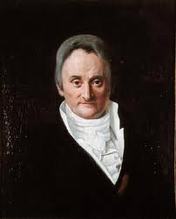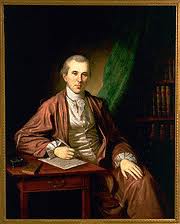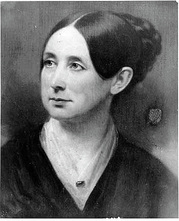Social Reforms of America: Early to Mid 19th Century
The Care of the Insane
Humanitarians figured in the early ninteenth that they could not be satisfied with the theory that the insane had lost their humanity and are reverted to animal behavior. They believed that the conditions of the insane should be seen as their misfortune and not their fault. The society owed kindness, comfort, and scientific treatment to them. They could cure the insanity in human being by improving their condition.
Several hospitals for insane people were constructed across the country. Constructive efforts were made to promote the cure of these patients by alleviating the condition. Nevertheless, most hospitals still prefered secure confinement. The rest of the insane were neglected in their homes, or in jails and almshouses under charge.
Several hospitals for insane people were constructed across the country. Constructive efforts were made to promote the cure of these patients by alleviating the condition. Nevertheless, most hospitals still prefered secure confinement. The rest of the insane were neglected in their homes, or in jails and almshouses under charge.
The first change was brought forth by Philippe Pinal, who was appointed head of the hospital for the insane in Paris. He was astonished to find the p

Philippe Pinal
patients being treated like animals. When the patients showed the slightest evidence of violence, they were shackled to the wall of their cells with iron collars that permitted any movement. Determined to see a more humane treatment, he slected a group of patients for his experiment. They were cleaned and fed properly with their chains off. Gradually, Pinel brought them back to some semblance of humanity. He published his work announcing the results of his experiment and encouraged many others to do the same.
In the early ninteeth century, William Tuke, an English Quaker who apparently had never heard of Pinel in the past century, conducted similar experiment and published a book entitled A Description of the Retreat near York. Tuke's work became popular in the English world and initiated movements of American humanitarians to open up asylums and hospitals for the insane.
In the early ninteeth century, William Tuke, an English Quaker who apparently had never heard of Pinel in the past century, conducted similar experiment and published a book entitled A Description of the Retreat near York. Tuke's work became popular in the English world and initiated movements of American humanitarians to open up asylums and hospitals for the insane.
The Father of American Psychiatry

Dr. Benjamin Rush
In his years after 1783, Dr. Benjamin Rush tried out in the Philadelphia Hospital many of the new theories coming from France and England and added methods of his own in the treatment of insane patients. He strongly rejected punishment, cruelty, and forms of restraint, and insisted for the nurses to have adequate training and be kind. Through working with problems of diet, water therrapy, and physical shock, Rush published the first treatise of mental diseases in America. His work aroused public opinion in America to provide support for the insane.
An enthusiastic observer described what he had witnessed in one of the hospitals for insane,
"Now they [the insane] are all neatly clad by day, and comfortably lodged in separate rooms by night. They walk quietly, with self respect, along their spacious and airy halls, or sit in listening groups around the daily paper, or they dig in the garden, or handle edged tools, or stroll around the neighborhood with kind and careful attendants. They attend soberly and reverently upon religious exercises, and make glad music with their united voices."
An enthusiastic observer described what he had witnessed in one of the hospitals for insane,
"Now they [the insane] are all neatly clad by day, and comfortably lodged in separate rooms by night. They walk quietly, with self respect, along their spacious and airy halls, or sit in listening groups around the daily paper, or they dig in the garden, or handle edged tools, or stroll around the neighborhood with kind and careful attendants. They attend soberly and reverently upon religious exercises, and make glad music with their united voices."
VIDEO!
Did you know that Benjamin Rush is also one of the Founding Fathers of America? Click here to watch a video on youtube about Rush's views on social issues. This video should be played directly through a proxy.
Did you know that Benjamin Rush is also one of the Founding Fathers of America? Click here to watch a video on youtube about Rush's views on social issues. This video should be played directly through a proxy.
The American Activist for the Insane

Dorothea Dix
Dorothea Dix's life as an activist for the insane began in 1841. She was asked to take a Sunday school class in the women's department of the House of Correction in East Cambridge. Her sympathy was aroused when she saw a few insane persons confined in a dreary room that was terribly cold. Dix began a campaign to improve the conditions of all the unfortunates who suffer from mental illness. To provide proof to the state, she collaborated with Samuel Gridley Howe and Charles Sumner on investigations of all the jails and almshouses of the state to complete the report of the indigent insane. In 1843, she presented a memorial, beginning with the famous line: "I tell what I have seen," that sparked instant reaction from people of the state. Despite of being accused as a sentimental idealist, Dix stuck with her campaign with Dr. Howe, Horace Mann, and Dr. Luther Bell on her back.
The success of her efforts in Massachusetts encouraged her to go for a nationwide campaign for state-supported hospitals for the insane. Starting from Rhode Island, Dix traveled more than thirty thousand miles amongst prisons, almshouses, jails, and hospitals, collecting data, preparing memorials, and arousing the public on behalf of her cause. Before 1860, around fifteen years after her first campagin, Indiana, Illinois, Louisiana, Tennesee, Mississippi, Missouri, North Carolina, the District of Columbia, Michigan, and Wisconson all accepted her appeal.
Even though most states had responded positively to her request, Dix's goal was still not accomplished for President Pierce vetoed the bill in 1854. After the Civil War, Dix continued to strike for her beliefs until age forced her to retire.
The success of her efforts in Massachusetts encouraged her to go for a nationwide campaign for state-supported hospitals for the insane. Starting from Rhode Island, Dix traveled more than thirty thousand miles amongst prisons, almshouses, jails, and hospitals, collecting data, preparing memorials, and arousing the public on behalf of her cause. Before 1860, around fifteen years after her first campagin, Indiana, Illinois, Louisiana, Tennesee, Mississippi, Missouri, North Carolina, the District of Columbia, Michigan, and Wisconson all accepted her appeal.
Even though most states had responded positively to her request, Dix's goal was still not accomplished for President Pierce vetoed the bill in 1854. After the Civil War, Dix continued to strike for her beliefs until age forced her to retire.
